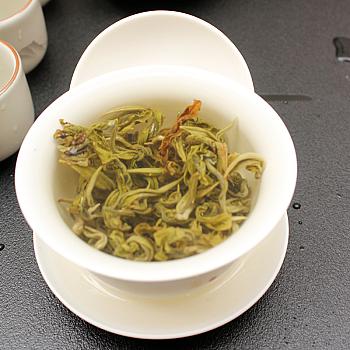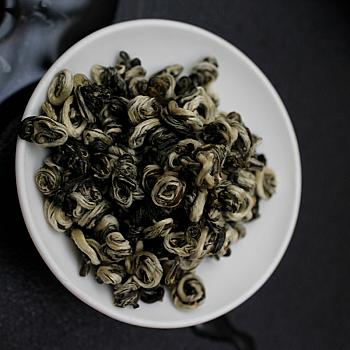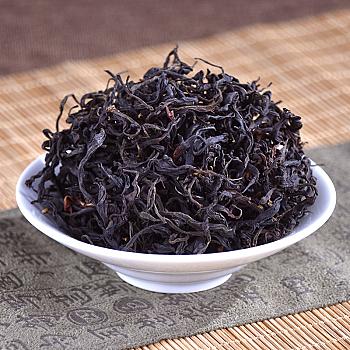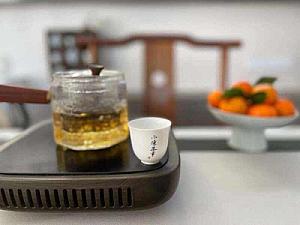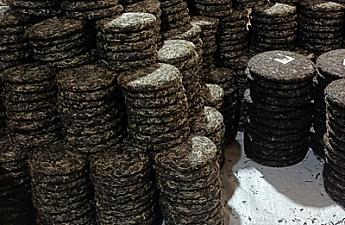
What is Yunnan Baiyao (White tea)?
August 14, 2025
Hello, tea enthusiasts! Today we will talk about Yunnan Moonlight White (White Tea) and Moonlight Beauty. Strictly speaking, Moonlight White belongs to the category of white teas: Yunnan white tea. The production process of white tea: withering, drying, light fermentation; Yunnan Da Ye variety: mainly using Jinguang Dayaicha as raw material, also some use Lancang Jime and other areas' materials. Because the raw material of white tea is special, there are not many manufacturers in China.
Hello everyone! Today let's talk about what is Yunnan Silver Needle (White Tea) and Snow Beauty?
Strictly speaking, Yueliangbai belongs to the white tea category: Yunnan White Tea. The processing technology of white tea: Withering, drying and light fermentation; the big leaf species in Yunnan: mainly use Jinggu Da Bai as raw material, also using Lancangjingma and Liming etc. materials. Due to the special raw materials of white tea, it belongs to a relatively small category among the six major tea categories across the country. The main place of origin is Fujian's Fuding and Zhenghe. Yueliangbai is also an indispensable supplement in the genealogy of Yunnan teas.

Image source from the internet only for appreciation
The production process of Yuelu White is very similar to that of Bai Mu Dan. Both undergo a fermentation process in the later stages and dry under shade. However, from an aesthetic point of view, they are quite different. The tea leaves of Yuelu White have black on one side and white on the other, with black and white alternating stripes on the leaves, giving it a resemblance to the crescent moon in the night sky.

Image source: Internet, for appreciation only
Bai tea differs from other tea types in its production process, which does not include kill green or knead processes. During the period of wilting, it undergoes a slight fermentation. The production process of Moonlight White is similar to that, plucking tea before sunrise, using dew-covered leaves, best one bud and one leaf or one bud two leaves, freshly picked leaves are spread flat on a shady shelf or a basket, avoiding direct sunlight, natural drying, with gradual dehydration, the leaves show black and white yin-yang colors naturally.
Lovely legends are always endless imagination space, Moonlight White is easily favored by women. Because of the mild fermentation of Moonlight White, it has reduced the bitter ingredients in fresh leaves, forming a soft, delicate, fragrant and sweet taste, with relatively weak bitterness, due to special techniques that retain a large amount of nutrients in tea leaves, unique efficacy.

Image source: Network, only for appreciation.
The main raw material of Yueliangbai is the Daye tea from Jiegao, Yunnan. Its core production area is in Mengla County, Pu'er City, where it is cultivated on the hillsides. The cultivation history of the Daye tea dates back to 160 years ago. According to historical records, Chen family picked some seeds from Mengku mountain in 1840 and brought them back for planting after storing them in a bamboo tube hung over their shoulder. After discovering that one seedling had yellow leaves, they moved it to the courtyard where it is cultivated today.
It can be said that the Da Bai Cha was the result of folk breeding. The old trees planted then are still there and growing well. The largest tree has a circumference of 1.22 meters, trunk diameter of 0.28 meters, height of 5.8 meters, and canopy width of 4.6 meters.
In recent years, the "aging gets better with time" concept has also been applied to white tea in various regions of China, and like Pu-erh tea, it is compressed into tight cakes. Moonlight White is an example of this trend. However, due to the lack of high temperature pan-frying and drying processes in the production process of white tea, the enzymatic activity in the tea leaves was retained, leaving room for post-fermentation.

Image from the internet only for viewing purposes.
Well, that's all for today's content. If you have any questions, feel free to leave a message in the comments section and we'll discuss it further. Next time, let's talk about the origins of Yunnan's six major tea mountains.
